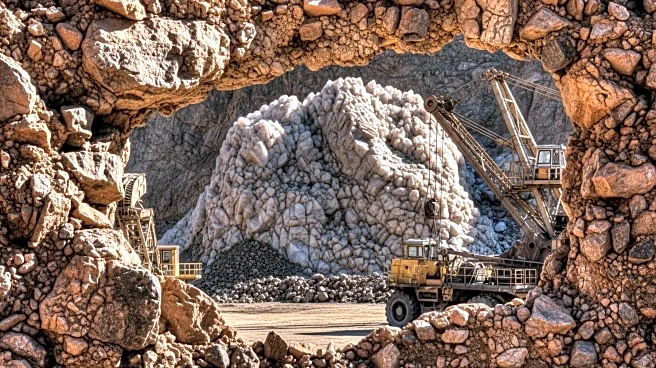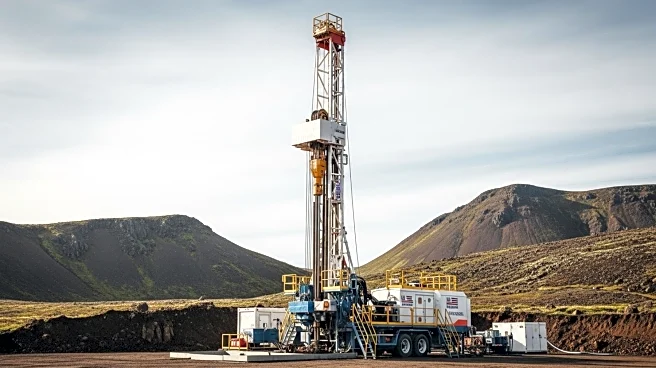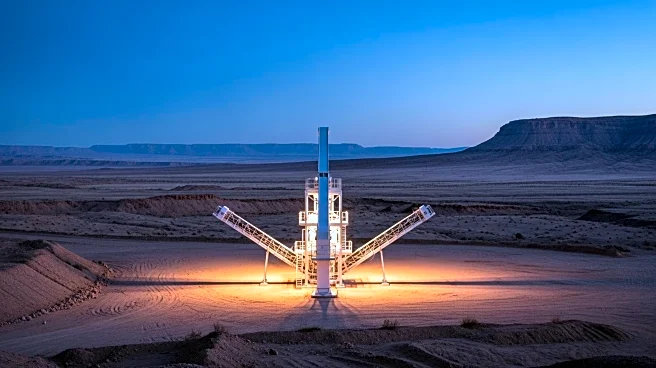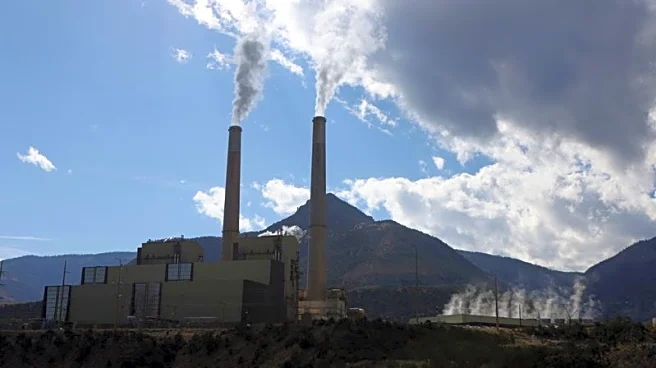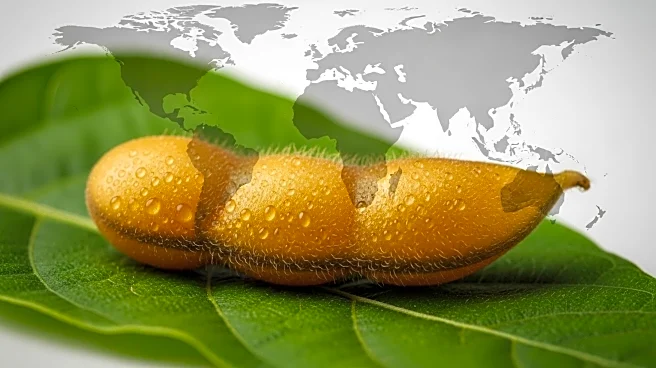What's Happening?
Sage Potash has secured a $14 million grant from the U.S. Department of Agriculture (USDA) to advance its Sage Plain Potash Project located in the Paradox Basin, Utah. This funding is part of the USDA's Fertilizer Product Expansion Program, aimed at enhancing domestic fertilizer production. The project is set to produce 300,000 tonnes of potash annually, a critical mineral for agriculture. The grant supports Sage Potash's efforts to increase domestic potash production, reducing reliance on imports. The company is currently undergoing permitting processes and conducting a Preliminary Economic Assessment (PEA) to evaluate the project's feasibility.
Why It's Important?
The USDA grant to Sage Potash is significant for the U.S. agricultural sector, as it aims to bolster domestic production of potash, a vital nutrient for plant growth. Currently, the U.S. imports over 90% of its potash, making this project crucial for reducing dependency on foreign sources. The initiative aligns with national strategies to secure critical mineral supplies and enhance food security. For Sage Potash, the grant provides financial backing to advance its project, potentially creating jobs and stimulating economic growth in the region. The project's success could also encourage further investments in domestic mineral production.
What's Next?
Sage Potash plans to complete its Preliminary Economic Assessment by the end of the third quarter of 2025. The assessment will include economic projections, cost analyses, and environmental studies. If successful, the project could proceed to the development phase, with potential impacts on the U.S. fertilizer market and agricultural productivity. The designation of potash as a critical mineral offers strategic advantages, including access to federal funding and tax credits, which could further support the project's advancement. Stakeholders will be watching closely to see how this development influences the domestic potash supply chain.
